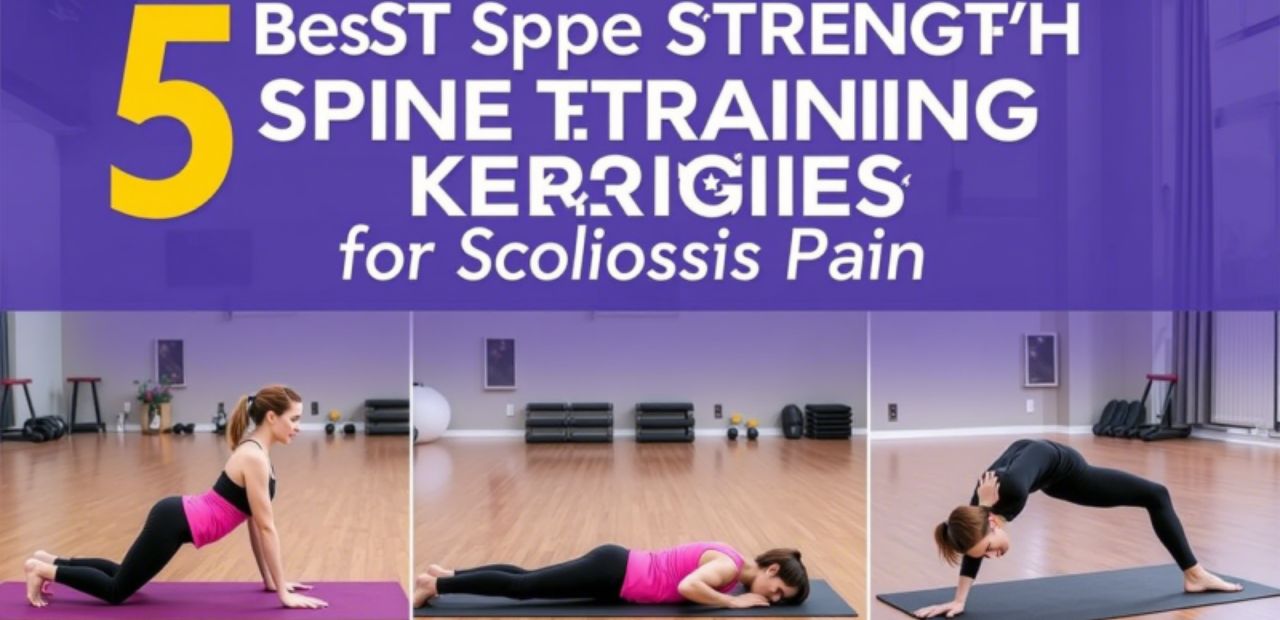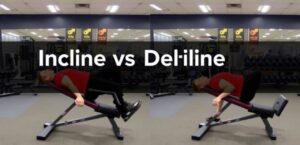Scoliosis, a condition where the spine curves abnormally, can often lead to discomfort and pain. While there is no one-size-fits-all treatment, strength training exercises for the spine can help alleviate scoliosis pain, improve posture, and increase overall flexibility. By focusing on exercises that strengthen the muscles around the spine, people with scoliosis can reduce muscle imbalances and improve their quality of life.
In this article, we’ll explore the 5 best spine-strengthening exercises that can help relieve scoliosis pain and support long-term spine health.
1. Planks
The plank is an excellent core-strengthening exercise that can help stabilize the spine, improve posture, and alleviate pressure on the back. Strengthening the core muscles surrounding the spine can offer better support for those with scoliosis and reduce pain and discomfort.
How to do it:
- Start in a push-up position with your forearms resting on the floor, elbows directly under your shoulders.
- Keep your body in a straight line from head to heels, tightening your abdominal muscles to engage the core.
- Hold this position for 20-30 seconds, then gradually increase the time as your strength improves.
Benefits: The plank targets the core, shoulders, and lower back muscles, providing stability and relieving pressure on the spine.
2. Bird-Dog
The bird-dog exercise is a fantastic movement for building core strength and improving balance. It targets the lower back and abdominal muscles, helping to stabilize the spine. For those with scoliosis, this exercise can promote a balanced posture and improve spine alignment.
How to do it:
- Begin on your hands and knees, with your hands directly under your shoulders and knees under your hips.
- Slowly extend your right arm forward and your left leg backward, keeping both limbs straight.
- Hold for a few seconds, then return to the starting position and repeat on the other side.
Benefits: This exercise strengthens the core, lower back, and glutes, helping to improve spinal alignment and reduce scoliosis pain.
3. Cat-Cow Stretch
The cat-cow stretch is a great mobility exercise for the spine, helping to improve flexibility and relieve tension in the back. It can be particularly beneficial for individuals with scoliosis as it helps to mobilize the spine and reduce stiffness.
How to do it:
- Start in a tabletop position with your hands under your shoulders and knees under your hips.
- Inhale as you drop your belly toward the floor, lifting your head and tailbone towards the ceiling (cow pose).
- Exhale as you round your back, tucking your chin toward your chest and pulling your belly button towards your spine (cat pose).
- Continue alternating between the two positions for 30 seconds.
Benefits: The cat-cow stretch improves spinal flexibility and mobility while providing relief from stiffness associated with scoliosis.
4. Wall Angels
Wall angels are an excellent exercise for improving posture and strengthening the muscles of the upper back and shoulders. This exercise helps open up the chest, counteracting the effects of poor posture that often accompany scoliosis.
How to do it:
- Stand with your back against a wall, feet about six inches away from the base.
- Press your lower back, upper back, and head against the wall.
- Raise your arms to form a “W” shape with your elbows bent at 90 degrees, and ensure your arms and hands are touching the wall.
- Slowly raise your arms to form a “Y” shape while keeping them in contact with the wall.
- Return to the “W” position and repeat for 10-15 repetitions.
Benefits: Wall angels strengthen the upper back and shoulder muscles, which helps improve posture and alleviate discomfort in the spine.
5. Superman Exercise
The Superman exercise is a great way to strengthen the muscles of the lower back, glutes, and shoulders. Strengthening these muscles can provide better support for the spine, helping to relieve scoliosis pain and improve stability.
How to do it:
- Lie face down on the floor with your arms extended in front of you and legs straight.
- Simultaneously lift your arms, chest, and legs off the ground, keeping your body in a “superman” position.
- Hold for a few seconds, then slowly lower back down to the floor.
Benefits: The Superman exercise targets the lower back, glutes, and shoulders, providing support for the spine and helping to alleviate scoliosis-related discomfort.
Tips for Practicing Spine Strengthening Exercises for Scoliosis
- Consult a healthcare professional: Before beginning any exercise routine, it’s important to consult a doctor or physical therapist, especially if you have scoliosis.
- Focus on form: Proper form is essential for maximizing the benefits of these exercises and minimizing the risk of injury.
- Consistency is key: Incorporate these exercises into your regular workout routine for the best results.
- Start slow: Begin with lower repetitions and gradually increase as you gain strength and confidence.
Conclusion
Incorporating spine-strengthening exercises into your routine can significantly reduce scoliosis pain, improve spinal alignment, and enhance overall quality of life. By focusing on exercises like planks, bird-dogs, and wall angels, individuals with scoliosis can strengthen the muscles surrounding the spine, alleviate discomfort, and improve posture.
Remember, consistency and proper form are key when it comes to strengthening your spine. If you’re experiencing persistent scoliosis pain, be sure to consult with a healthcare professional for personalized advice.

Emily Rose Johnson is a passionate writer with a knack for crafting engaging content. She specializes in communication strategies, digital marketing, and creative storytelling.









